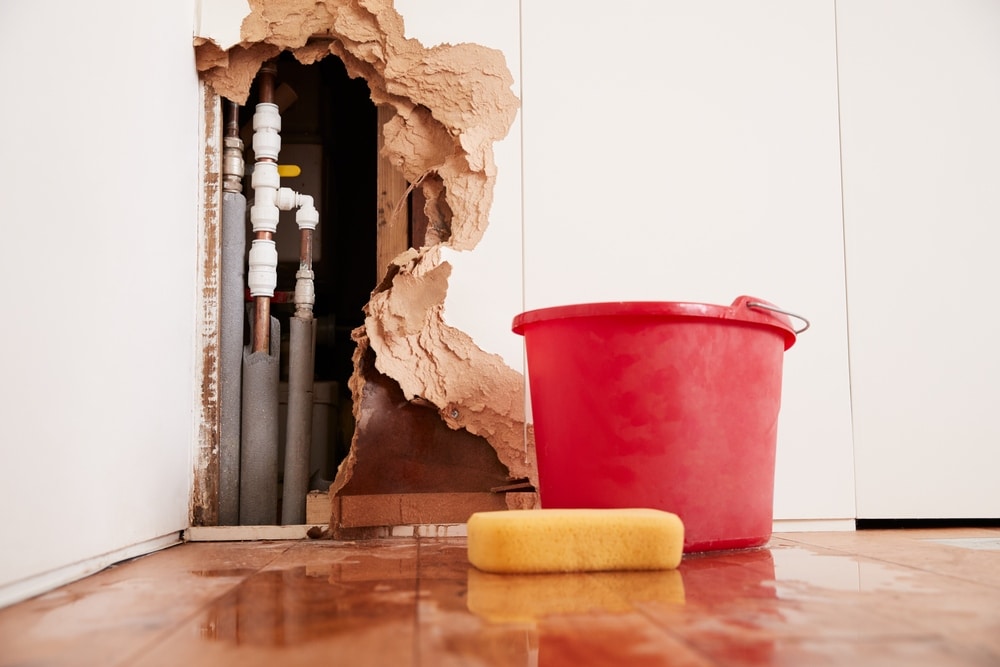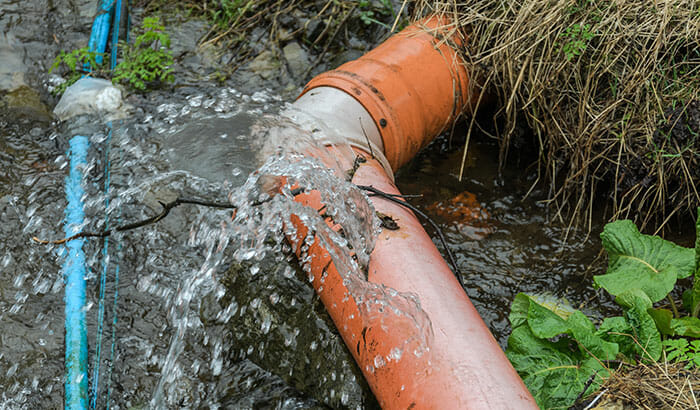What to Do When a Burst Pipe Causes Water Damage in Your Home
What to Do When a Burst Pipe Causes Water Damage in Your Home
Blog Article
Protecting Against Ruptured Piping: Vital Tips to Protect Your Plumbing
Avoiding ruptured pipelines is an essential issue for home owners, particularly during colder months when the risk of cold is heightened. Executing tactical measures such as correct insulation, regular examinations, and keeping consistent indoor temperatures can substantially reduce the possibility of pipe failure.
Understand Pipe Vulnerabilities
Understanding pipeline vulnerabilities is important for reliable pipes upkeep and protecting against pricey damage. A number of factors contribute to the susceptibility of pipes to bursts, consisting of product structure, age, and environmental problems. Older pipelines, particularly those made from galvanized steel or polybutylene, usually degrade gradually, causing increased risk of leakages and ruptures.
Temperature level changes can also significantly impact pipe honesty. In cooler environments, water trapped in pipelines can freeze, applying and expanding pressure on the pipe walls, which might eventually result in a burst. High water pressure can strain pipes, particularly at joints and bends, heightening the probability of failure.

Insulate Water Lines Appropriately
Correct insulation of pipelines is essential for stopping cold and succeeding ruptureds throughout winter (burst pipe). Shielding your pipes system efficiently safeguards against temperature drops that can result in pricey damage. Begin by determining prone locations where pipelines are subjected to outdoor temperatures, such as cellars, attics, and outside wall surfaces
Use foam pipe insulation sleeves or wrap insulation tape around these locations to give a safety barrier. Ensure that all sections of the pipelines, particularly those with restricted warmth direct exposure, get appropriate insulation. Pay special focus to joints and fittings, as these are much more at risk to cold.
When insulating, it's necessary to choose materials that meet neighborhood building codes and are suitable for the specific environment. As an example, fiberglass insulation is often recommended for its thermal resistance properties - burst pipe. Additionally, take into consideration utilizing warm cables or tape in extreme conditions, which can be plugged in to give extra warmth
Frequently check protected pipelines for any signs of wear or damages, as jeopardized insulation can diminish its performance. By taking these aggressive actions, you considerably decrease the risk of pipeline bursts, making certain a trusted plumbing system throughout the cold weather.
Maintain Constant Temperature Level
A stable interior temperature is important for avoiding burst pipes during the frigid months. When temperatures decrease, water within pipelines can freeze, expanding and developing stress that may inevitably trigger the pipes to burst. To alleviate this risk, home owners should maintain a consistent temperature level throughout their home, preferably no less than 55 ° F(13 ° C)Utilizing a programmable thermostat can help manage interior temperature levels efficiently, guaranteeing that spaces with plumbing stay warm also when the residence is unoccupied. Pay special interest to locations that are more prone to cool, such as garages, attics, and basements. Keeping cabinet doors open under sinks can also allow warmer air from the home to distribute around pipes.
Furthermore, it is prudent to permit taps to drip slightly during severe cool spells. This minor circulation of water can prevent freezing by relieving pressure within the pipes. In addition, throughout especially serious weather events, consider momentarily suspending any type of nighttime setbacks on your thermostat to keep a steady cozy setting. By implementing these strategies, home owners can significantly decrease the risk of pipeline bursts and secure their plumbing systems versus the extreme wintertime aspects.
Consistently Check Plumbing
Routine assessments of pipes systems are vital for stopping ruptured pipes and maintaining general home honesty. Throughout these examinations, it is essential to examine visible pipelines for signs of corrosion, leaks, or put on.
Furthermore, checking links and joints is crucial, as these points are often at risk to leakages. Home owners need to additionally analyze water stress levels, as too much pressure can strain the pipes system and boost the threat of pipeline bursts.
Take into consideration scheduling specialist plumbing evaluations a minimum of once a year, especially prior to winter months, to guarantee your system is prepared for chillier temperature levels. Regular evaluations not just help in determining immediate problems however also foster lasting maintenance techniques that can click site improve the life expectancy of your plumbing system. By being aggressive in your approach, you can protect your home against the costly and disruptive consequences of burst pipes. Prioritizing plumbing assessments is an investment in your house's wellness and safety and security.
Know Emergency Situation Treatments
Recognizing emergency treatments is vital for every homeowner, particularly after carrying out regular pipes examinations. Being prepared for a plumbing emergency situation can significantly mitigate damages and save costs.
Next, maintain essential devices convenient. A pipes emergency set must consist of a wrench, bettor, and towels, along with a flashlight and a bucket for little leakages. Additionally, consider having the get in touch with details for a trusted plumbing professional conveniently offered, needs to the situation intensify past Check Out Your URL your control.
If you identify a leakage or burst pipe, promptly transform off the supply of water and notify your plumbing technician. Document the damages with photographs for insurance policy objectives. Recognize the indications of potential pipes concerns, such as uncommon water pressure variations or damp places on wall surfaces
Ultimately, aggressive knowledge and quick action are vital in more info here managing plumbing emergencies, ensuring your home stays protected and decreasing prospective damages.

Final Thought
Finally, stopping burst pipelines demands a multifaceted strategy that includes understanding pipe susceptabilities, correct insulation, maintaining constant indoor temperature levels, regular assessments, and expertise of emergency treatments. By executing these essential methods, the danger of plumbing failures can be considerably reduced, therefore making certain the durability and efficiency of the plumbing system. Positive measures not just secure versus possible damages however additionally add to general water conservation and the protection of building.
In colder climates, water entraped in pipelines can ice up, expanding and exerting stress on the pipeline wall surfaces, which may eventually lead to a burst. When temperature levels decline, water within pipelines can ice up, increasing and producing stress that may eventually create the pipes to ruptured. By applying these strategies, home owners can dramatically reduce the threat of pipe ruptureds and protect their pipes systems versus the severe winter aspects.

Report this page